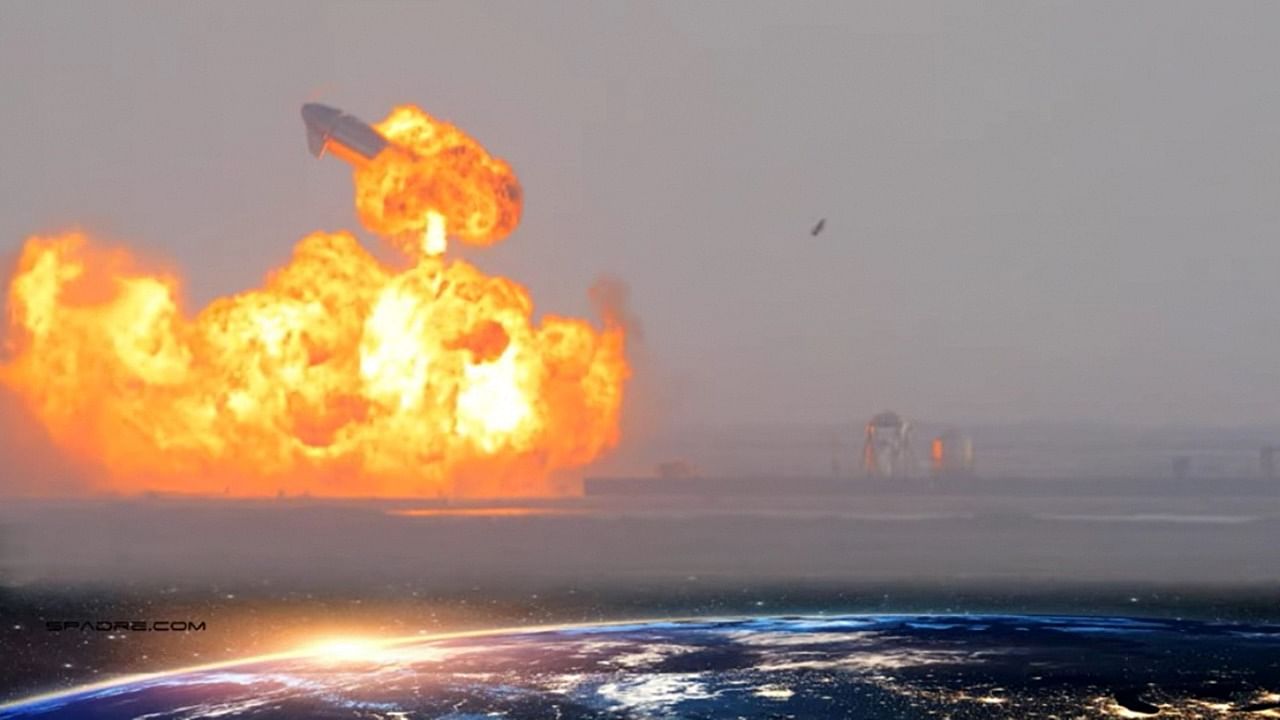
A prototype of SpaceX's unmanned rocket Starship exploded on Wednesday, the third time a test flight ended in flames.
The mishaps may seem like disasters but experts say these incidents are part of the spaceship's development, and even, in a way, beneficial.
SpaceX is developing the rocket with the goal of sending humans to the Moon on it from 2023 and then to Mars. It will also be able to place satellites in orbit.
The giant spacecraft is 50 meters (165 feet) tall and nine meters in diameter.
It will in the future sit atop a first stage called Super Heavy, making the combined vehicle 120 meters in height.
The rocket will be reusable — a key focus of billionaire Elon Musk's space venture.
It can also carry some 100 tons of material into space, with SpaceX calling it "the world's most powerful launch vehicle ever developed."
Since December, SpaceX has carried out three tests with Starship prototypes.
SN8 and SN9 (SN stands for serial number) came into their landings too quickly and exploded into huge fireballs.
SN10, on Wednesday, managed to land vertically, as expected, but exploded on the ground a few minutes later.
SpaceX has not provided an explanation.
The rocket was not completely upright and was slightly damaged on landing, said Jonathan McDowell of the Harvard-Smithsonian Center for Astrophysics.
"Even a small methane leak" could have caused the explosion, he said.
The purpose of the tests is to acquire new data for analysis to improve the prototype.
"Testing is not binary," with results measured in black and white, Glenn Lightsey, professor at the Daniel Guggenheim School of Aerospace Engineering, told AFP.
"Since the explosion occurred after SpaceX had stuck the landing, it is likely that most of the test objectives were met," he said.
Specifically, the rocket reached 10 kilometres (32,800 feet) in altitude as planned, and turned into a horizontal position during its flight.
In addition, "the vertical soft landing is a spectacular achievement," Lightsey said because it showed SpaceX has successfully fine-tuned deceleration for landing after the SN8 and SN9 explosions.
SpaceX congratulated itself after each of the three test flights.
"Starship SN10 landed in one piece!" Musk tweeted Wednesday, an hour after SN10 exploded.
Thomas Zurbuchen, associate administrator NASA's science mission directorate, also tweeted his congratulations to SpaceX: "Cheers to iteration without which there is no innovation. To many more!"
The repeated test launches are possible due to SpaceX's status as a private company.
"To the best of my knowledge, Elon is using his own money for the Starship tests. Thus he doesn't have to answer to NASA, the Congress or anyone but his own shareholders," said G. Scott Hubbard, who previously worked for NASA and now chairs the SpaceX Commercial Crew Safety Advisory Panel.
Meanwhile, NASA depends on Congress for its budget, and ultimately answers to the American taxpayer.
SpaceX is free to take more risks.
"In the development phase of a project it's much better to try something quickly," McDowell said.
"Once you put people on the rocket of course you need to change the approach, but at this stage, SpaceX is doing exactly the right thing," he said.
Added Lightsey: "By accepting more risk and potential for failure as a privately held company, SpaceX and other companies like it are disrupting the space industry."
A new Starship prototype is already in development.